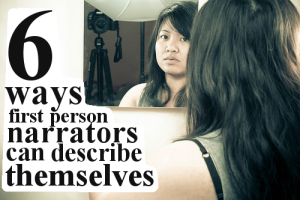After waiting for it all week, you’re finally settling in at your computer with a giant mug of tea. You open your novel-in-progress. You scroll to the blank space at the end. You stretch your fingers.
And nothing happens.
You don’t feel like writing. You’re still tired from the mad work week. Your brain hasn’t woken up yet. You need to start the laundry, balance the checkbook and scrub out the tub. And this scene is boring. And you’re not really sure what happens next. Well, you know what happens next, but you don’t know how to get from here to there and it’s just not coming!
No use in wasting time staring at your computer (or, more likely watching YouTube videos and checking Pinterest). Here are 23 fun things you can experiment with to make your novel better while you wait for inspiration to strike.
- Cut 50 words from the previous page.
- Find creative ways to eliminate five adverbs (seach “ly” using the Find tool to find them).
- Go back to the previous scene and add a detail that reveals something about a character.
- Outline your villain’s evil plan.
- Jot down five alternate titles for the book.
- Write five alternate first sentences.
- Try moving chapter breaks around. See if every chapter can end in a cliffhanger.
- Go back to the previous action scene (fight, chase, whatever) and experiment with shortening all the sentences. Try using more incomplete sentences.
- Find a place where you use a color to describe something (brown, grey, green, yellow) and replace/supplement the name of the color with the name of an item (e.g. chocolate, dust, moss, straw).
- In the scene in which you are stuck, think of the most ridiculous thing that could happen next.
- Think of the most surprising (but plausible) thing that could happen next.
- Have a chat with your protagonist. Ask if he would rather do something else.
- Turn on some music that matches the feel of the scene you are trying to write (heavy metal for a battle scene, classical violin for a death scene, etc.) and free write whatever comes into your head.
- Write a scene that comes much later but that you’ve been dying to get to.
- Find your longest paragraph so far and shorten it by a third.
- Pick a minor character (even one you haven’t named) and write a short story about them.
- Add scents to two of your scenes (the sweaty corn chip smell of a teenager’s bedroom, the sharp blend of bleach and urine in a public restroom, etc.).
- Pick another scene and remove all visual description, supplementing with only sound, scent, taste, and touch.
- Read a chapter of that book on writing that’s been gathering dust for the last few months.
- Find five verbs in the previous chapter and replace them with more descriptive synonyms. Bonus points if you can eliminate some more adverbs, too (“walking quickly” becomes “sneaking”).
- Find five places where you can cut out dialogue tags (he said, she said), without sacrificing clarity.
- Pick one character and give them a nervous quirk, like biting their nails or smoothing their mustache. Comb your manuscript for good places to add it in.
- You know those notes you make when you get a brilliant idea? The ones you hardly ever look at again? Reread them.
–
Now you have no excuse. Go play!
–









